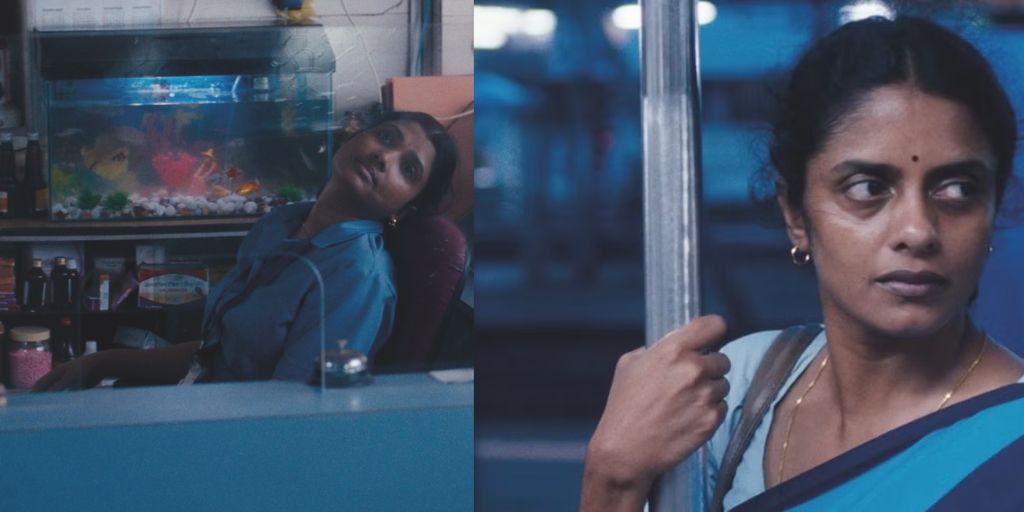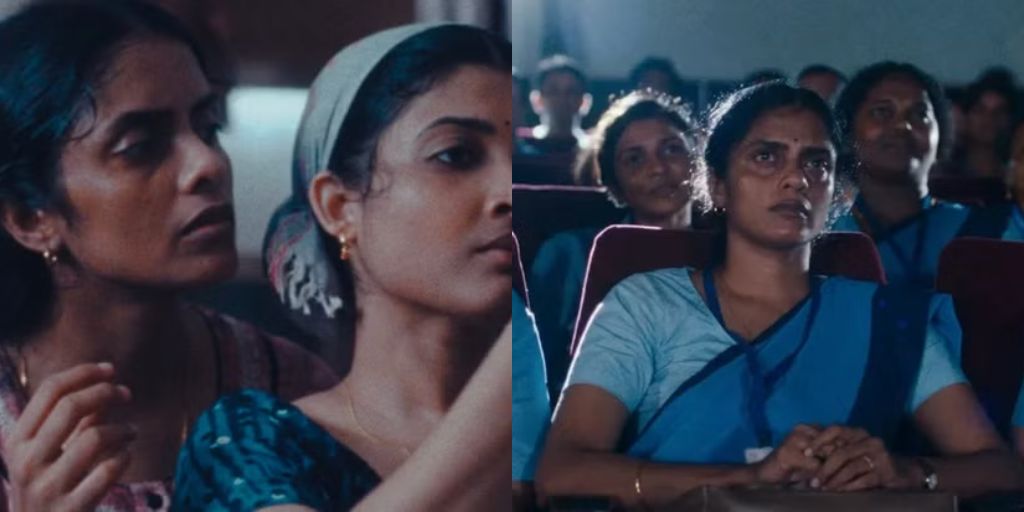In some movies, the setting is as important as the acting, writing, or directing. For example, Call Me By Your Name might not have touched audiences so deeply if it were not set in the warm atmosphere and lush greenery of Crema, Italy.
Recent films and shows are called “love letters” to certain cities, such as Once Upon a Time in Hollywood, Chungking Express, Midnight in Paris, and Steve McQueen’s Blitz. However, it is rare to see a specific place used as the main problem in the story.
Payal Kapadia’s All We Imagine as Light starts with a series of images of the people of Mumbai, who are always on the move, looking tired and unhappy. We hear voiceovers from different characters sharing their thoughts about the city. One man says, “I’m afraid to call it my home.”
Kapadia shows Mumbai as a place without hope, where people work too hard, the poor are separated from the rich, and no one can change this.
Although the film ends with some hope, it paints a rather bleak picture of Mumbai, suggesting that happiness relies on escaping the city. It tells a story about feeling disconnected and how, no matter how tough we try to be, we all need personal connections with others in some form.
‘All We Imagine as Light’ Is a Story of Human Connection
After winning the Gran Prix award at Cannes, All We Imagine as Light is a slow, serious drama about Prabha (Kani Kusruti), a reserved nurse in Mumbai. Her husband, whom she met through an arranged marriage, lives in Germany. He avoids her calls and sends a rice cooker as a gift, but with no note.
Prabha lives with Anu (Divya Prabha), a younger nurse hiding her relationship with a young Muslim man named Shiaz (Hridhu Haroon) because her parents want her to marry a Hindu man.
Their lives are tough, which makes Prabha hard and makes her lash out at Anu when she is friendly with a doctor who likes Prabha. Another colleague, Parvaty (Chhaya Kadam), faces threats from gangsters trying to turn her home into luxury apartments.
Every part of the city only brings sadness to these characters. Throughout most of the film, Kapadia shows the cast moving through the city, with the background often blurry. A voiceover mentions a constant feeling of change and loss, and themes of feeling lost appear in every scene.
Anu finds comfort in secret meetings with Shiaz, while Prabha turns away the doctor’s advances even though she feels very lonely. He tells her he plans to leave the city because he still does not know how to get home after living there for six months.
He blames the language barrier, but this supports Kapadia’s idea of Mumbai as a crowded yet lonely place that no one should call home. “It’s a city of illusions,” he says to her, suggesting that any happiness in the city is not real; this also connects to the movie’s title and the idea that people often distort their reality to find something to hold on to.
‘All We Imagine Is Light’ May Be Too Slow For Some Audiences
The movie takes a long time to build up, and many audiences may find it too slow. The first half is especially gloomy, and the loose plot makes it feel disjointed. However, it is worth watching until the end, where the change of scenery feels refreshing.
Prabha and Anu help Parvaty move to a seaside village, marking the first real sign of hope in the story. Prabha’s world opens up, and she begins to lower her walls. This change also improves her relationship with Anu, and the two women realize how much they need each other, despite their differences.
The movie shifts from a tone of despair to one of hope. When a man washes up on the beach, locals gather but feel helpless, saying, “He’s a goner,” and “He’s already dead, no?” Prabha is the only one who knows CPR. She saves the man, and they form a deep bond that Prabha did not know she needed.
All We Imagine as Light is about feeling disconnected and how people need each other, a place to belong, and a sense of community to survive. Director and writer Payal Kapadia faces many challenges in her film, some of which she overcomes, while others appear in the final cut.
Even with the praise it has received since its premiere at Cannes, All We Imagine as Light feels like a movie that one appreciates rather than enjoys. Kapadia’s camera work is amazing, making a city with over 20 million people feel like the loneliest place on Earth.
It is a thoughtful, serious film, and while many viewers might not have the patience to get through the first half hour, those who do will find their efforts rewarded in the end.
However, viewers should not expect a film that keeps them amazed and engaged from start to finish. There are rough patches that may lose some viewers’ interest, but the final act offers a smooth path to a beautiful conclusion.
Kani Kusruti and Divya Prabha Give Impactful Performances
Kani Kusruti, playing Prabha, portrays a woman who has learned to hide her feelings. She seems cold, but it is not by choice. Behind her one-word answers lies a world of complex emotions, beaten down by the belief that to live easily, one must simply keep going.

Her performance might seem too subtle to carry the film alone, highlighting the need for a strong supporting cast. Divya Prabha’s hopeful gaze searching for beauty and joy serves as a perfect balance to Kusruti’s gloom.
When the world feels too serious, a glance from Kusruti can give the audience a moment of recognition, and her love story and quest for a better life create a strong bond between the audience and the story.
It is encouraging to see a female-directed and female-led Indian film focusing on deep feelings receive so much attention from critics. This soulful film may seem cold initially but gradually reveals itself to be a touching story about some of the most basic feelings humans have.
It requires some patience. However, there are times when Kapadia seems to spend too much time on visuals, with scenes that feel too long without much plot movement.
At just under two hours, the movie could have cut 20 minutes and still delivered its emotional impact. But in the end, the journey is worth it, providing a viewing experience that feels earned.





